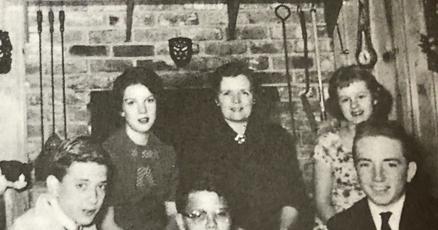Home Demonstration Clubs for women in Georgia originated in 1918 and continued until the 1950s, playing a crucial role for farming families, especially during the challenging periods of the Great Depression and World War II.
Operating under the County Extension Service, Home Demonstration agents in Georgia, including DeKalb and Fulton counties, were pivotal. These agents extensively traveled to demonstrate various food preservation methods like canning and freezing, as well as teach valuable skills such as sewing.
In the early years, Home Demonstration agents often traveled by horse and buggy. When conducting canning lessons for groups without equipment, the agents would bring along the necessary tools, such as a canner.
Upon Ethel Warren’s arrival in Dunwoody and subsequent marriage to Stephen Spruill in 1933, she actively participated in the Dunwoody Home Demonstration Club. She fondly recalled Katherine Strong Rudeseal as the DeKalb County agent.
Ethel Spruill showcased her culinary talents at contests during the annual Harvest Festival, a DeKalb County fair in Panthersville. She excelled in cooking competitions featuring chicken, eggs, and canning. Notable victories included the Sears Roebuck’s canning contest and a baking competition sponsored by Fleishman Yeast in 1949.
Young individuals involved in 4-H also had the chance to learn similar skills. During that period, boys typically focused on farming, while girls concentrated on food preservation and other domestic abilities. Opal Ward served as the Fulton County Home Demonstration agent, with support from assistant agent Rubye Nance in 1936. These two women conducted a demonstration for the Roswell 4-H Club girls.
In her book “Sandy Springs Past Tense,” Lois Coogle reminisces about the Sandy Springs Home Demonstration Club, highlighting Nell Glass’s proficiency in cooking and canning, much of which she acquired from the Home Demonstration Club. Glass effectively managed her vegetable garden, fruit trees, cow, and chickens, generously sharing eggs with neighbors.
Octie Nance took on the role of president at the Sandy Springs Home Demonstration Club in 1935. The March meeting featured a program on “Personality as applied to clothing,” with a committee established to enhance the corner of Dunwoody Road and Roswell Road. County agent Opal Ward graced the meeting with her presence.
During the September 1953 meeting of the Brookhaven Home Demonstration Club, the discussion centered on storage space solutions. Held at Mary Robinson’s residence on Osborne Road, the meeting included a demonstration showcasing innovative storage solutions.
Elsie Barrow’s account highlights how the Home Demonstration Club acted as a center for education and community bonding among women. Upon moving to Tilly Mill Road in Dunwoody in 1947, Elsie initially felt isolated. However, through interactions with neighbors like Ethel Spruill and Arva Floyd, she gradually embraced the community spirit fostered by the Home Demonstration Club.
